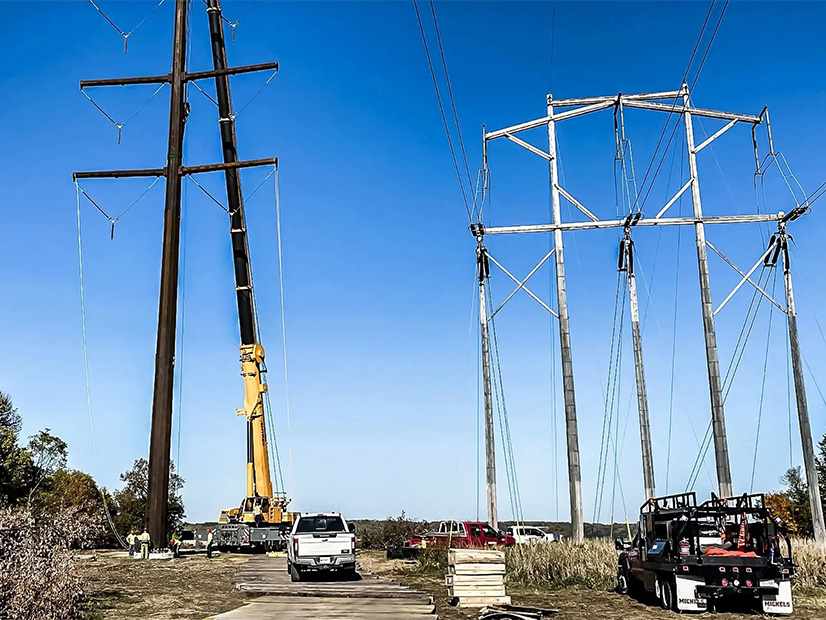ITC Holdings (NYSE:ITC) says that a MISO 2016 market efficiency project is proof that rights-of-first-refusal laws benefit the grid and ratepayers.
Nathan Benedict, ITC’s regulatory strategy manager, said the transmission developer is so confident that the 50-mile, 345-kV line in Minnesota has been so successful that it will use the project as a case study when it files comments on transmission planning and cost containment with FERC later this week.
The $118 million Huntley-Wilmarth line was part of MISO’s 2016 Transmission Expansion Plan and would have been open to competitive bidding were it not for Minnesota’s more than decade-old ROFR law.
A handful of state legislatures in MISO’s footprint have introduced and sometimes tabled ROFR rules this year. The pressure to pass or set aside the laws is sharpened by the nearly $30 billion in new transmission spending the grid operator may recommend for its Midwest region under its long-range transmission plan (LRTP). Mississippi became the latest MISO state to enact a ROFR law when Gov. Tate Reeves signed legislation earlier this month.
Meanwhile, a pending complaint asks FERC to invalidate states’ ability to give incumbent utilities first shots on construction. (See MISO States Ramp Up ROFR Legislation.)
“It takes this discussion of who is going to build the transmission off the table and focuses on the transmission planning,” Benedict told RTO Insider. “We realize the most cost-effective measure to cost containment is coordinated transmission planning.”
“We feel at the end of the day, the Minnesota ROFR allowed us to manage costs effectively and respond to route, environmental and landowner concerns and secure a return on investment,” ITC Midwest Communications Manager Rod Pritchard said.
Pritchard said Huntley-Wilmarth was originally estimated at $108 million in 2016 dollars. He said the original design incorporated a single-circuit, H-frame wooden structure design that ultimately morphed into the costlier double-circuit, steel monopole design after input from the Minnesota Public Utilities Commission.
Possible routing changes meant project co-owners ITC Midwest and Xcel Energy (NASDAQ:XEL) were grappling with nine different route alternatives ranging from 45 to 57 miles that differed from MISO’s preliminary estimates, Pritchard said. At one point, landowner feedback collected by the Minnesota PUC could have pushed the line’s cost as high as $167 million.
Pritchard said that because of “collaboration with incumbent utilities and very aggressive cost-containment measures,” ITC and Xcel were able keep costs at $118.3 million. He called Huntley-Wilmarth an “excellent example of two transmission owners under the ROFR process working together” to provide the best routing and cost-containment decisions.
Huntley-Wilmarth is now alleviating constraints in southern Minnesota and northern Iowa, once one of MISO’s most congested spots, Pritchard said.
“There are segments of our industries where competition doesn’t make sense,” Benedict said, pointing to a 2022 Concentric Energy Advisors’ report that concluded competitive projects average 27% in cost increases and an additional 12 months of schedule delays.
Benedict said there’s no time to waste in energizing the new transmission necessary to bring record amounts of renewable energy online.
ITC estimates it will be responsible for roughly $1.4 billion to $1.8 billion of MISO’s first LRTP portfolio, which is valued at $10 billion. The developer will be involved in six of the 18 projects.
“As an incumbent, we have extensive knowledge of the communities, the geography … the intricacies of what it takes to plan transmission,” Benedict said.
He said states have the “prerogative” to remove the uncertainty from transmission-expansion decisions after FERC issued Order 1000 in 2011.
Benedict acknowledged that ITC differs from other utilities in that it’s an independent and unbundled transmission developer. He said the company’s independence from generation means it’s focused on how to best improve the transmission system.
“We really want an efficient grid that works best for customers,” he said.
Benedict said while transmission investment raises customer bills, it can also offset delivered energy costs and other portions of the bill.


